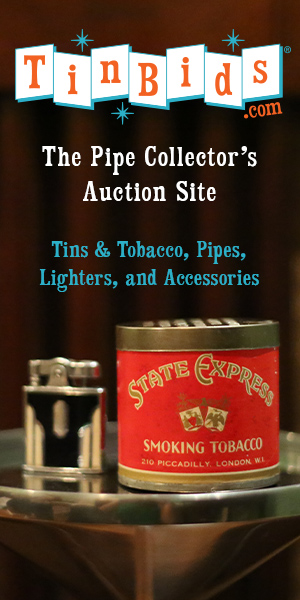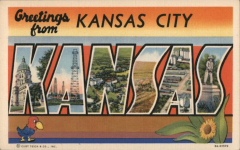I'm curious: are any of you guys familiar with our National tobaccos?
Greetings from the Highland Plateau of Brazil
- Thread starter AngueraCoyra
- Start date
You are using an out of date browser. It may not display this or other websites correctly.
You should upgrade or use an alternative browser.
You should upgrade or use an alternative browser.
SmokingPipes.com Updates
Watch for Updates Twice a Week
I wish I was that worldly.I'm curious: are any of you guys familiar with our National tobaccos?
Asia , Central and South America is the extent of my experience.
I haven’t imported anything as of yet. Please educate us on some.
Hello and welcome from California  Happy to have you here, friend!
Happy to have you here, friend!
I am unfamiliar with the national tobaccos of Brazil, but I have definitely enjoyed blends made with Brazilian leaf.
I am unfamiliar with the national tobaccos of Brazil, but I have definitely enjoyed blends made with Brazilian leaf.
Not directly but I have a blend that features some Brazilian Virginia IIRCI'm curious: are any of you guys familiar with our National tobaccos?
I’m from the same area as you and just inherited a collection of pipes. I remember going to a tobacco shop when I was a little girl that was located downtown and somewhat close by the Plaza (I believe). Do you know if there’s still an old shop down there? Just am curious. Thanks
Yep, sure is, Diebel's. Been there for years.I’m from the same area as you and just inherited a collection of pipes. I remember going to a tobacco shop when I was a little girl that was located downtown and somewhat close by the Plaza (I believe). Do you know if there’s still an old shop down there? Just am curious. Thanks

Diebel's Sportsmens Gallery
Diebel’s Sportsmens Gallery offers Kansas City’s most extensive selection of premium cigars, cigar accessories and gifts for men.
diebelsg.com
Welcome from Virginia, please familiarize us with your local tobacco’s, I’m definitely interested what everyone is smoking down there. I believe I’ve seen ropes from Argentina on the forums but I can’t remember seeing Brazil specific blends.
Well I'm a hopeless nationalist, so this will be a bit long:I wish I was that worldly.
Asia , Central and South America is the extent of my experience.
I haven’t imported anything as of yet. Please educate us on some.
To summarize the situation, pipe smoking was a staple for every man here from before the Discovery Age (our main Amerind Peoples loved tabacco and consumed it frequently) to some 80 years ago.
When the cigarette industry took over, it simultaneously brought foreign tobaccos that became the staple for producers: mostly Virginia and Burley. The vast majority of producers dropped the local varieties, entered in a sort of bondage with the companies and just churned out as much cheap Virginia as possible.
Then a few decades ago all the anti-tobacco rage and taxes further discouraged production, and the already rare local varieties almost all died out.
Due to the efforts of some heroic farmers (above all Dalberto from the Southernmost Province) however, a few varieties survive to this day. These are the ones I know:
Jaguari: Bright yellow color, big and elastic leaf. It looks like Virginia, but is completely different; it is as gentle and low in nicotine, but has a super intense aroma that you just can't miss. Sweet jam and vanilla notes, some nutty aspects and an exotic scent I can't describe as anything other than some unknown Indian spice. This is all in the pure leaf. It's delicate and requires a lot of care to be grown.
Dalberto's family saved it from extinction, now it's planted also by Pablo in the Rainforest Province of Acre.
Rústica, also known as Mói: It is of the nicotiana rustica species, different from all the other varieties that are tabacum. This has (no joke) over 10 times the nicotine of normal tobaccos, I find it stronger than Perigque even. It has an aroma of dated fruits, honey and caramel of sorts, very distinct; the taste is great and mellow, you don't feel any bite or discomfort in the mouth at all.
Folks cultivate it in the South, in Acre, and (believe it or not) the best leaf comes from an Amazon Tupi tribe that cures it with unknown methods and then sells to the outside world.
Arapiraca: comes from the semi-desert Northeastern Province of Alagoas. It is smoked like Latakia and DFK, but turns out completely different. Has an intense earthy, arid, and salty smell; it's too stronged to be smoked alone for most guys, but blended with lighters tobaccos it adds plenty unexpected notes and surprises you every time.
Only produced as a rope tobacco.
Maçambico: by now it's only planted in the South by Dalberto, as far as I know. It's a distinctively thick and crunchy leaf, full of aromas. It's mildly sweet and smells like bananas, plums and licorous drinks. Medium nicotine; some folks describe it as a more intense Jaguari.
Only produced as a rope tobacco.
Amarelinho: translates to "little yellow guy". It's pretty much a Virginia, but is even lighter, with a gentler aroma that stays the same through all the bowl. It's the tobacco of choice for straw cigarettes ("palheiros")
Only produced as a rope tobacco.
Tietê: This comes from the São Paulo Province, over the seaside mountais. It smells (no joke) of cream cake with biscuits, then you get herbs, then you get almonds, and there's honey mixed in all of that. Just an explosion of aromas and flavor; seriously, it's more intense even than aromatics.
Only produced as a rope tobacco, it has a very distinctive green center.
Carapiá: It's not actually a leaf, but a dust made from a rainforest root that folks add to tobacco; has a undescribable aroma that is like nothing you've ever smelled your whole life. If you had to try just one Brazilian tobacco mixture in your life, I'd tell you to choose anything with Carapiá on it.
There might be plenty more though, in random villages, lost in the middle of nowhere, every now and then we come accross a new strain being cultivated by some poor old guy who doesn't even know he has a rare gem in his land.
Yes, ropes were the preferred method of curing tobacco in all os South America.Welcome from Virginia, please familiarize us with your local tobacco’s, I’m definitely interested what everyone is smoking down there. I believe I’ve seen ropes from Argentina on the forums but I can’t remember seeing Brazil specific blends.
I hope you have the patience for that book I just wrote haha
Can't say that I am.I'm curious: are any of you guys familiar with our National tobaccos?
Hello and welcome to the Forum from Deep in the Heart of Texas. You will find this site to be informative and the members insightful (and at times, most entertaining). Enjoy your stay!
Welcome! This is very interesting. We cannot get any of these tobaccos in the US. Do Brazilians usually smoke them in pipes or rolled into cigarettes?Well I'm a hopeless nationalist, so this will be a bit long:
To summarize the situation, pipe smoking was a staple for every man here from before the Discovery Age (our main Amerind Peoples loved tabacco and consumed it frequently) to some 80 years ago.
When the cigarette industry took over, it simultaneously brought foreign tobaccos that became the staple for producers: mostly Virginia and Burley. The vast majority of producers dropped the local varieties, entered in a sort of bondage with the companies and just churned out as much cheap Virginia as possible.
Then a few decades ago all the anti-tobacco rage and taxes further discouraged production, and the already rare local varieties almost all died out.
Due to the efforts of some heroic farmers (above all Dalberto from the Southernmost Province) however, a few varieties survive to this day. These are the ones I know:
Jaguari: Bright yellow color, big and elastic leaf. It looks like Virginia, but is completely different; it is as gentle and low in nicotine, but has a super intense aroma that you just can't miss. Sweet jam and vanilla notes, some nutty aspects and an exotic scent I can't describe as anything other than some unknown Indian spice. This is all in the pure leaf. It's delicate and requires a lot of care to be grown.
Dalberto's family saved it from extinction, now it's planted also by Pablo in the Rainforest Province of Acre.
Rústica, also known as Mói: It is of the nicotiana rustica species, different from all the other varieties that are tabacum. This has (no joke) over 10 times the nicotine of normal tobaccos, I find it stronger than Perigque even. It has an aroma of dated fruits, honey and caramel of sorts, very distinct; the taste is great and mellow, you don't feel any bite or discomfort in the mouth at all.
Folks cultivate it in the South, in Acre, and (believe it or not) the best leaf comes from an Amazon Tupi tribe that cures it with unknown methods and then sells to the outside world.
Arapiraca: comes from the semi-desert Northeastern Province of Alagoas. It is smoked like Latakia and DFK, but turns out completely different. Has an intense earthy, arid, and salty smell; it's too stronged to be smoked alone for most guys, but blended with lighters tobaccos it adds plenty unexpected notes and surprises you every time.
Only produced as a rope tobacco.
Maçambico: by now it's only planted in the South by Dalberto, as far as I know. It's a distinctively thick and crunchy leaf, full of aromas. It's mildly sweet and smells like bananas, plums and licorous drinks. Medium nicotine; some folks describe it as a more intense Jaguari.
Only produced as a rope tobacco.
Amarelinho: translates to "little yellow guy". It's pretty much a Virginia, but is even lighter, with a gentler aroma that stays the same through all the bowl. It's the tobacco of choice for straw cigarettes ("palheiros")
Only produced as a rope tobacco.
Tietê: This comes from the São Paulo Province, over the seaside mountais. It smells (no joke) of cream cake with biscuits, then you get herbs, then you get almonds, and there's honey mixed in all of that. Just an explosion of aromas and flavor; seriously, it's more intense even than aromatics.
Only produced as a rope tobacco, it has a very distinctive green center.
Carapiá: It's not actually a leaf, but a dust made from a rainforest root that folks add to tobacco; has a undescribable aroma that is like nothing you've ever smelled your whole life. If you had to try just one Brazilian tobacco mixture in your life, I'd tell you to choose anything with Carapiá on it.
There might be plenty more though, in random villages, lost in the middle of nowhere, every now and then we come accross a new strain being cultivated by some poor old guy who doesn't even know he has a rare gem in his land.
Welcome from the province of Québec, Canada. That’s a great tobacco list to start researching. Thank you for the info!









